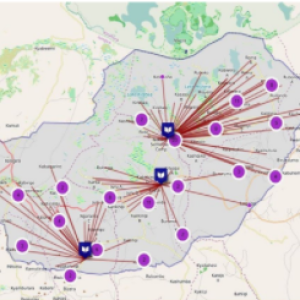
Analysing the profiles of seasonal human mobility from anonymized and aggregated mobile phone data. Application in food security.
Summary
This initiative analysed seasonal mobility patterns at the arrondissement level in Senegal in 2013 using Call Detail Records of the second iteration of the ‘Mobile Phone Data for Development Challenge’. It aimed to quantify different mobility patterns associated with seasons and ‘livelihood zones’, which are defined as areas offering similar options for gaining food, an income and trading goods. In the past, seasonal mobility in Senegal showed to be associated with agricultural calendars, rainfalls, and socio-economic profiles. Mobile phone data eases the possibility of tracking in real-time this internal mobility.
Results
This study showed that most rural livelihood zones suffered a severe population reduction during summer, while Dakar increased its population in the same season. In contrast, there was a sharp population decrease by the end of the summer.
Overall, occasional visitors in a livelihood zone represented 10% of the dynamic population, and permanent residents a 40% to 50% of the total. In the case of Dakar, 70% of the population were permanent residents.
In rural areas, the migratory population represented 40 to 50 per cent of the total population. The most significant mobility in the rural areas was at the beginning of the rainy season.
This initiative can be replicated in countries or regions where access to the whole mobile phone data is available. Identifying socioeconomic profiles by mobile data can be considered difficult depending on the geographical context; mobile data ownership might not be aligned to the cell phone user.
(Figure © Zufiria, P. et al. (2018)).



